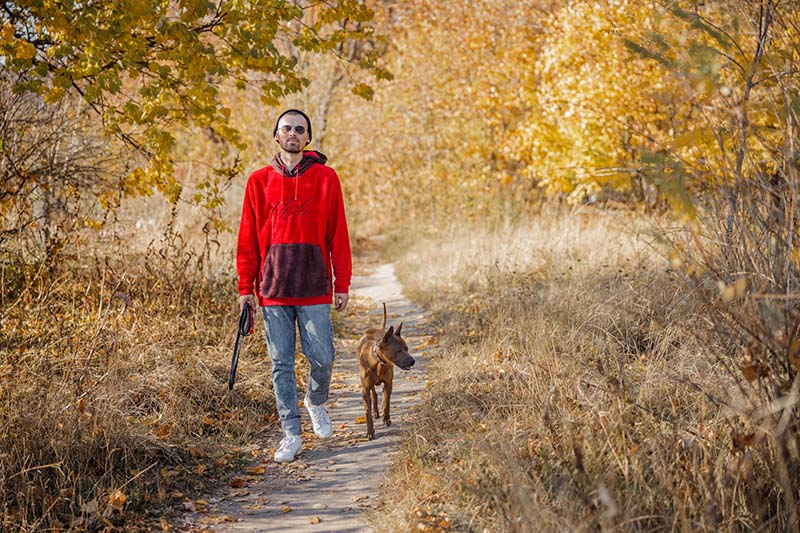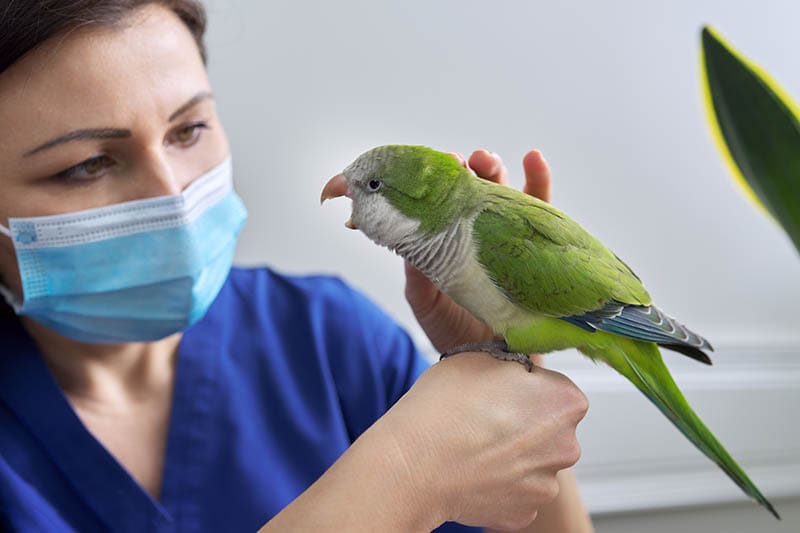VET APPROVED

The information is current and up-to-date in accordance with the latest veterinarian research.
Learn more »Click to Skip Ahead
Many dog owners can attest to the excitement that follows when they pick up a leash and their pup realizes it’s walk time! Walking is not only a great form of exercise, but it also offers important mental benefits for dogs as well. A study has even shown that performing regular scent work promotes a more optimistic state of mind in dogs!
Most dogs need 1-2 walks per day. On average, aim to walk your dog for 20 minutes to 1.5 hours a day, depending on their breed, age, and energy level. We have lots of information about the exercise requirements of individual breeds that you can look for on our site. This can be a long walk a day, or various shorter walks that will add up the time your dog needs.

How Long Does My Dog Need to Walk?
This depends on a lot of different factors. For example, a senior Great Dane will probably be happy with a slow saunter around the block, while an energetic young border collie might hike for two hours and still be ready for more!
Your veterinarian will be able to offer specific guidance for your particular pup—taking their age, breed, and overall health into consideration.
Keep in mind that walks don’t have to be the same every single day. While it is important to prioritize walks for your dog, don’t worry about being super regimented. Schedules change, and weather can also be a factor. Likewise, walks need to be kept short when it’s excessively hot or cold outside.
Hiring a dog walker may be a good option if you have an energetic dog, but you don’t always have time for a long walk. You can also check out these ways to provide enrichment on days that opportunities for physical exercise may be limited.
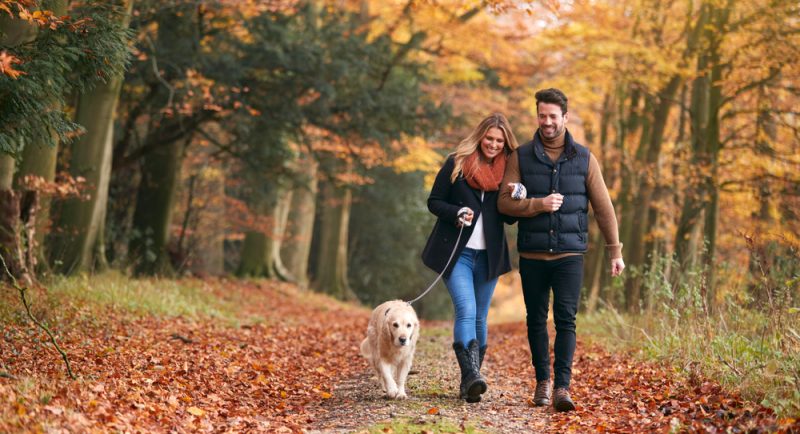
Walk Duration Based on Dog Types
Among the many dog breeds in the world, some require longer exercise sessions to burn off their high energy, while others will do fine with a short stroll around the block. To help you determine the best routine for your dog, we’ve categorized dog breeds into three groups so you can identify where your dog fits and tailor their daily walks to meet their specific needs.
While we haven’t listed all the dog breeds in this list, we hope this breakdown will help you identify your dog’s category.


Health Considerations
There are certain health conditions that will limit your dog’s ability to take long walks. Always consult with your vet to make sure their exercise time is suitable for their health. These are the most common health conditions to watch for when walking your dog.
Brachycephalic Breeds
When walking a brachycephalic (flat-faced) dog, such as a Bulldog, Pug, or Shih Tzu, it’s important to be mindful of their unique needs. Brachycephalic breeds are prone to overheating and can struggle to breathe in hot conditions due to their shorter airways.
It’s important to monitor them closely for signs of fatigue, such as heavy panting, drooling, or slowing down. During the warmer months, particularly during humid conditions, it is safer to only take these breeds out for a short toileting walk, preferably first thing in the morning and after sunset.
Dogs Suffering From Arthritis
If your dog suffers from arthritis, it’s important to be cautious of the conditions where they’re walking. Walking on softer surfaces like grass rather than pavement can reduce joint impact.
Dogs with arthritis may experience stiffness, pain, or discomfort, especially in cold weather or after long periods of rest. Opt for shorter, more frequent walks at a relaxed pace to avoid putting too much strain on your dog’s joints. Pay close attention to any signs of discomfort, such as limping, slowing down, or reluctance to move, and adjust the walk accordingly.
Joints start to warm up after 15-20 minutes of exercise, making them more susceptible to damage. For dogs with arthritis or issues like hip or elbow dysplasia, it is best to modify their exercise routines to reduce the risks of causing inflammation to the joints.

Overweight or Obese Dogs
If your dog is overweight or obese, it’s important to exercise them daily, but be cautious of not surpassing their limits. Watch out for signs of fatigue, panting, or reluctance to walk, as this may be a sign that they have reached their limit.
To help your dog get used to walking and exercising, aim to slowly increase walk sessions in intervals of 5 minutes until you reach the exercise time recommended by your vet. This will offer more exercise to your dog while avoiding over-exercising them. Using a properly fitted harness, like the Halti no-pull harness, instead of a collar will also reduce strain on their neck, especially if they tend to pull. Remember to consult with a vet before starting any exercise plan to ensure it’s safe for your dog’s specific health condition.
If you have questions about walking frequencies, etiquette, or your dog’s health specifically, you should contact a vet.

A Note About Walking Puppies
Have you ever watched a puppy fall asleep in the middle of a play session? Their bodies are very good at telling them when to take a break! Puppies should never be encouraged (or forced) to keep exercising when they are tired.
Expect that walks will be short, especially at first, while your puppy is getting used to being on a leash. Walks at this age are less about exercise, and more about training and socialization! Always remember to stop if your puppy seems to be getting tired.
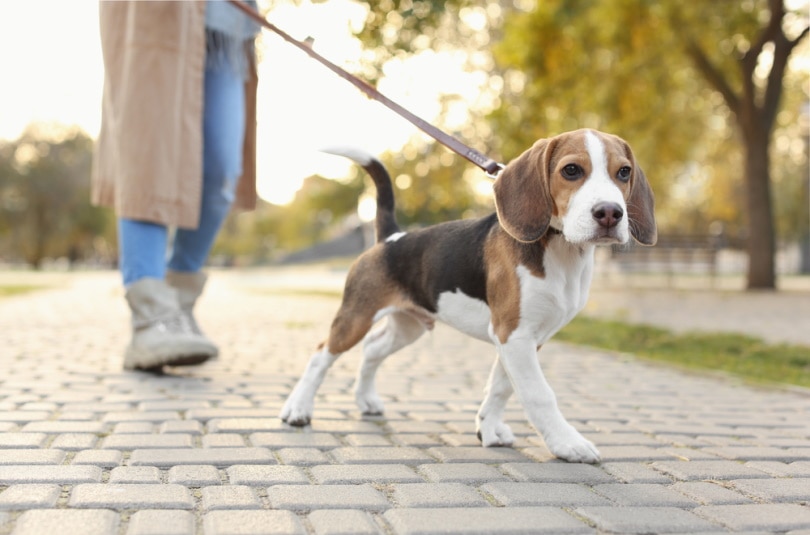
The Importance of Sniffing on Walks
While it can be a little annoying when your dog wants to stop and sniff everything, try to indulge them at least some of the time. When given free choice on a walk, it is estimated that dogs spend about a third of their time sniffing!
Walks are your dog’s chance to get out of the house and see what’s going on in the neighborhood. Consider varying your route to provide novelty, and check out this article for ideas on how to take your dog for a special “sniff walk”.
How Do I Know if My Dog is Getting Enough Exercise?
Generally, calm behavior and ability to settle at home are good indications that a dog’s exercise and mental stimulation needs are being met. A dog who isn’t getting enough of these things may display destructive behavior, restlessness, or excessive barking.
Walks alone may not be enough for high-energy dogs and working breeds, who often also require high levels of mental stimulation. For these types of dogs, consider providing outlets for the natural behavior(s) your dog is driven to perform. Examples include scent work, retrieving, herding, and agility.
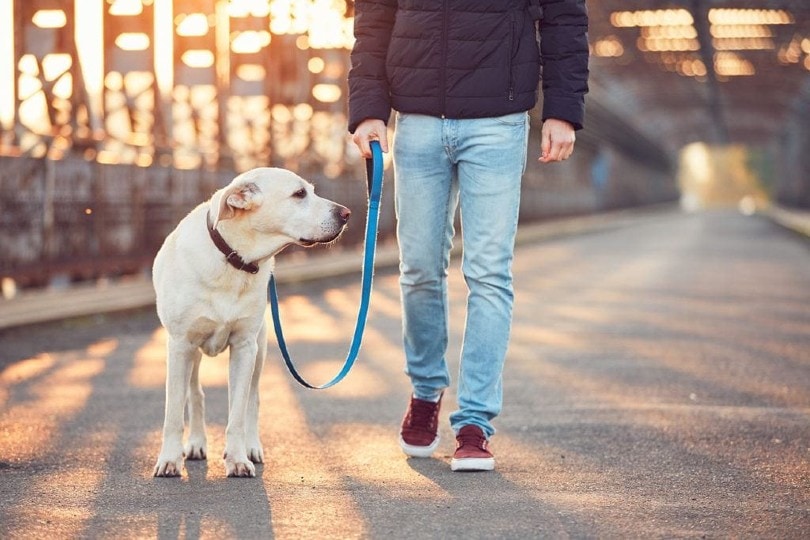

Summing Up
Daily walks contribute greatly to your dog’s physical and emotional well-being. There are many benefits to consider, some of which include:
- Helping your dog maintain a healthy body weight, which may reduce their risk of certain diseases and help them live longer.
- Providing important mental stimulation.
- Creating opportunities for social interactions with people and other dogs.
- Strengthening the bond between you and your pup.
Remember to check with your veterinarian before changing your dog’s exercise routine, and never force them to keep exercising if they seem tired.
Related Reads:
- National Walk Your Dog Day: Here’s How It’s Celebrated
- What Happens if I Don’t Take My Dog for a Walk? (Vet Answer)
Featured Image Credit: Olena Yakobchuk, Shutterstock
